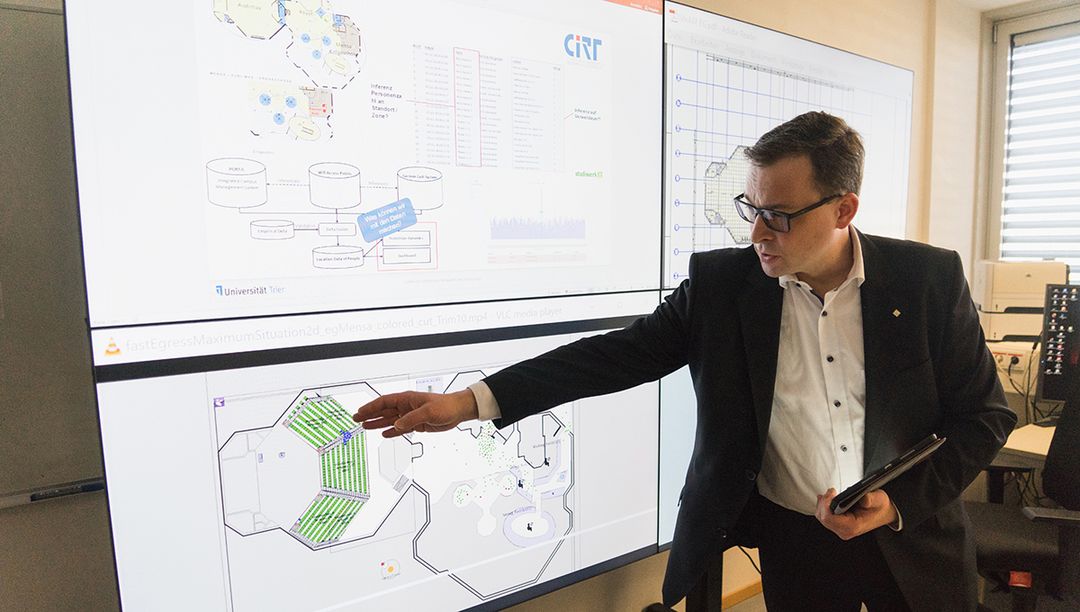What happens when a school that was closed because of Corona is reopened? What is the effect of just under half of the population - from experience rather young people - using an app designed to help limit the corona virus?
These and other scenarios can be simulated in the computer using artificial intelligence methods. To do this, scientists use so-called simulation models that are fed with various parameters, such as the course of disease and human behaviour patterns. These simulations calculate how people meet at work, in schools or during leisure time and how a virus can spread. The calculated results can help to assess which measures are useful and which are not.
Several years ago, Ingo Timm, Professor of Business Informatics at the University of Trier and head of the Cognitive Social Simulation Department at the German Research Center for Artificial Intelligence (DFKI), had already worked on simulation models for the spread of influenza. He and his colleague Dr. Jan Ole Berndt are now working on various measures for the corona pandemic. "We are in the process of adapting the successful flu model to the corona pandemic, and initial tests are promising," says Berndt.
"Computer simulation has great potential for pandemic management. We are integrating knowledge and findings from medicine, social research and psychology. Since the spread of the virus is dependent on human behaviour and factors such as school closures, for example, and since we represent this in our simulation models, we want to learn to better assess the effectiveness of these measures," says Timm. The scientists hope to present the first results of their simulations within a month.
In order to transfer the behaviour of people in the current situation into the simulation models, the scientists have launched an online survey. They are looking for participants of all age groups.
The survey (in German language) runs until 22 April 2020 and can be accessed via the following link: www.umfrage.wi1.uni-trier.de

